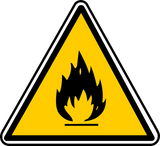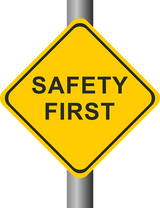Do You Know The Warning Signs of Work-Related Fatigue?

If not, you should. With summer now upon us, many employees will be working long hours in the hot sun. The combination of heat and physical exertion can lead to exhaustion, placing workers at a greater risk for injury and illness.
When workers become fatigued, a number of physiological changes begin to occur, one of which is slower reaction times. It may take a fatigued worker longer from the time when his or her brain to processes a task to actually doing it. And when the task involves something like driving a forklift or handling hazardous materials, just a couple fractions of a second can lead to injury.
Another problem associated with work-related fatigue is the inherit risk for human error. It's in our nature to make mistakes, but when you continue to push yourself without taking a break, you're more likely to make these mistakes.
According to a study conducted by researchers at the Alberta Human Resources and Employment center, the effects of sleep exhaustion was similar to that of alcohol intoxication. Researchers found that staying awake for 21 straight hours resulted in the same clouded judgement and slower response time as a blood alcohol content of 0.08. Staying awake for a full 24 hours, however, results in the equivalency of a .10 BAC.
So, how do you know if you or someone with whom you work is fatigued? See below for a list of common signs and symptoms.
Here are some of the signs and symptoms of work-related fatigue:
- Irritability
- Mood swings
- Exhaustion
- Trouble staying awake
Thankfully, work-related fatigue is easily prevented through proper working practices. Employers should provide workers with breaks during intervals of their respective shifts. Sure, some workers may prefer to work through their break for extra money, but this can create a dangerous situation if he or she becomes fatigued.
It's important to remember that heat will speed up work-related fatigue. Therefore, employers should take measures to keep workers cool and comfortable throughout the day. When inside, use air conditioning and oscillating fans to keep workers cool. Unfortunately, this isn't an option for workers who are forced to endure the outdoors, but there are still a few things you can do to keep cool. When working outside, workers should drink plenty of water to stay hydrated and cool themselves off by going indoors during breaks.
Recent Posts
-
Fire Safety in the Workplace: What You Need to Know
What steps are you taking to prevent fires in your workplace? According to the U.S. Occupational Saf …Aug 23rd 2023 -
Is It Safe to Go Jogging With a Cold Infection?
If you're suffering from a cold infection, you might be wondering whether it's safe to go jogging. T …Aug 22nd 2023 -
5 Safety Tips to Follow When Using a Powder-Actuated Tool
Powder-actuated tools are commonly used to join materials to steel and concrete. Also known as Hilti …Aug 20th 2023




